We may receive a commission when you use our affiliate links. However, this does not impact our recommendations.
While at Bloodline Merchants we also investigated this English workbench, which is almost certainly an early manual training bench.
The face vise is a Parkinsons Perfect Vise (and yes, it is spelled “vise” not “vice” on the casting). Parkinsons were made in the 1880s and this example features early metal screw threads that are not the familiar Acme thread we use today. The vise is a quick-release model and opens by pulling the trigger to the side of the vise’s hub.
It still works silky smooth after almost 140 years. Amazing.
The bench is low, heavy and contains a variety of cabinets and “drawers” below for tools. I put the word “drawers” in quotes because they aren’t really drawers. They’re covered cubbyholes or some such.
The “drawer fronts” look to be locked down with two vertical battens to thwart would-be tool pilferers. But when you turn a turnbuckle (with no locking mechanism), one of the battens folds out. Then when you reach for the drawer pull to remove the drawer the ruse is revealed.
There are no drawers. The drawer front merely covers a cubbyhole. I wonder what the story is here. The bench clearly saw a lot of hard use and yet no one had time (or perhaps the intent) to finish out the drawers.
It’s a charming bench. And I would have much rather learned woodworking on it instead of the Levard training bench I encountered yesterday.
— Christopher Schwarz
Here are some supplies and tools we find essential in our everyday work around the shop. We may receive a commission from sales referred by our links; however, we have carefully selected these products for their usefulness and quality.



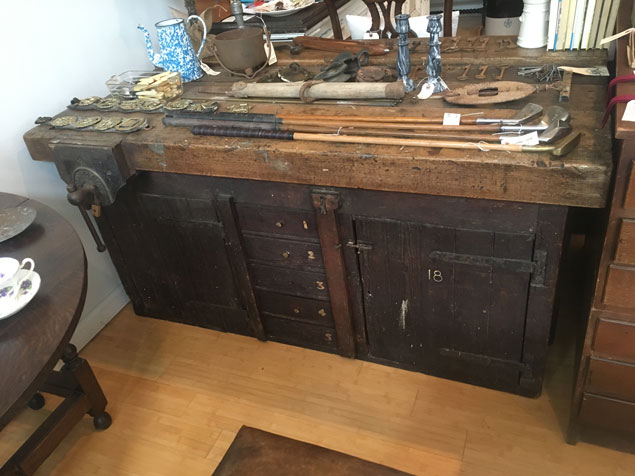
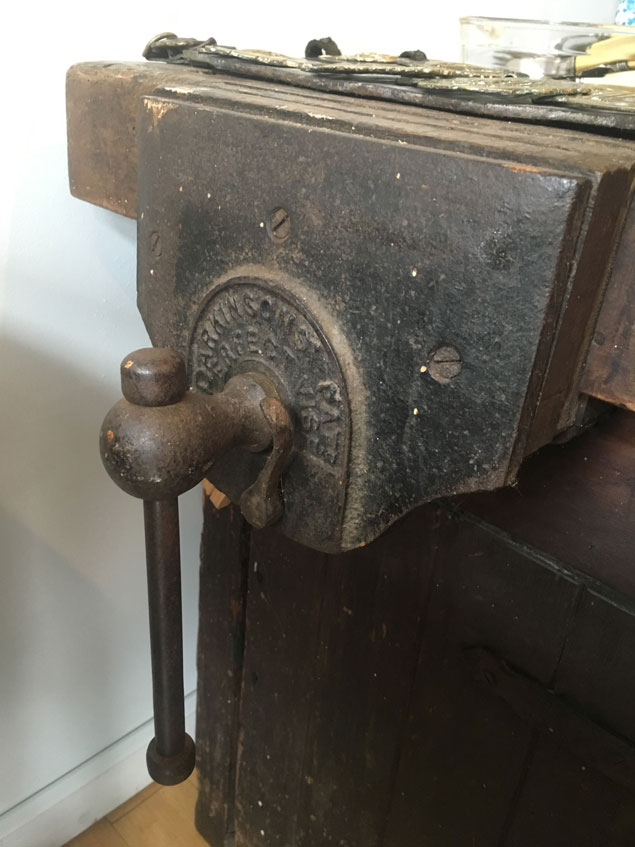
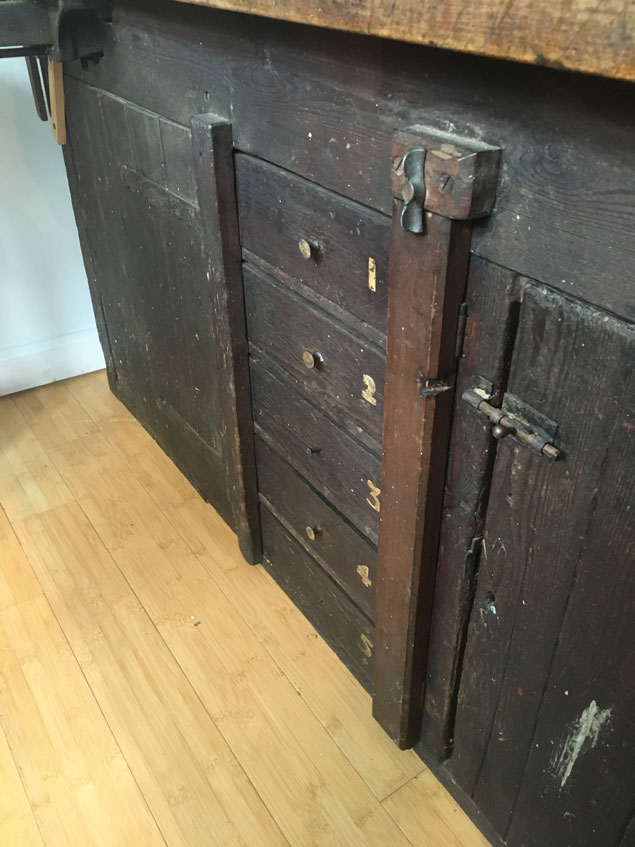
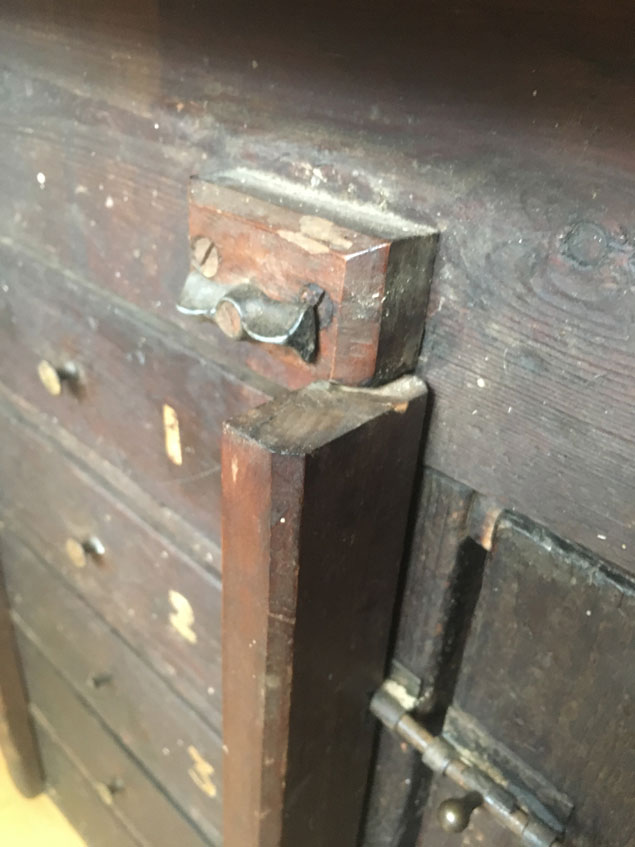
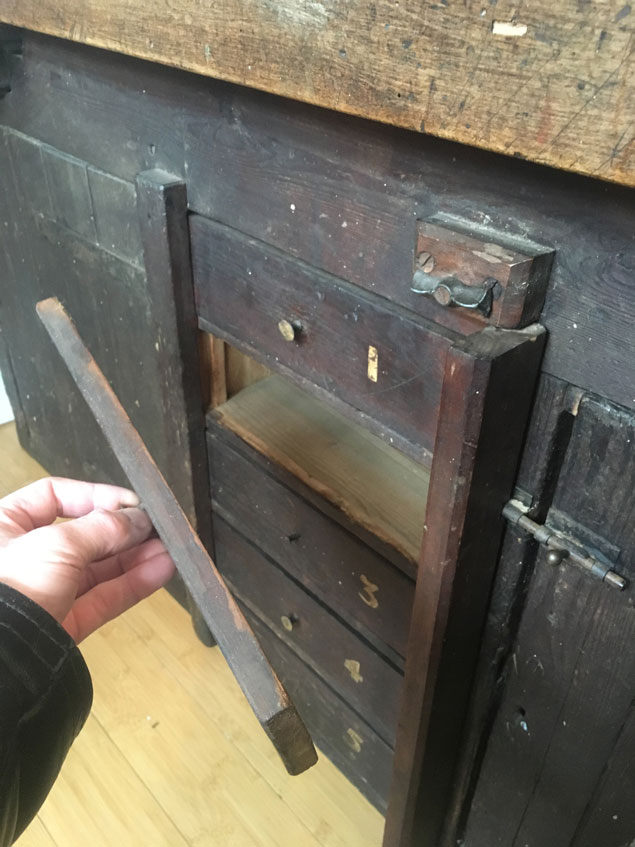






The numbering suggests a different cubby for each student at different periods during the day. Just a guess.
Thinking back to my shared bench days in high school (with regard to the cubby holes), maybe each student had a tray of tools and would slide the entire tray out and place it on the bench when needed, slide it back when done. (We had little square lockers under the top that could be locked. Same idea though.)